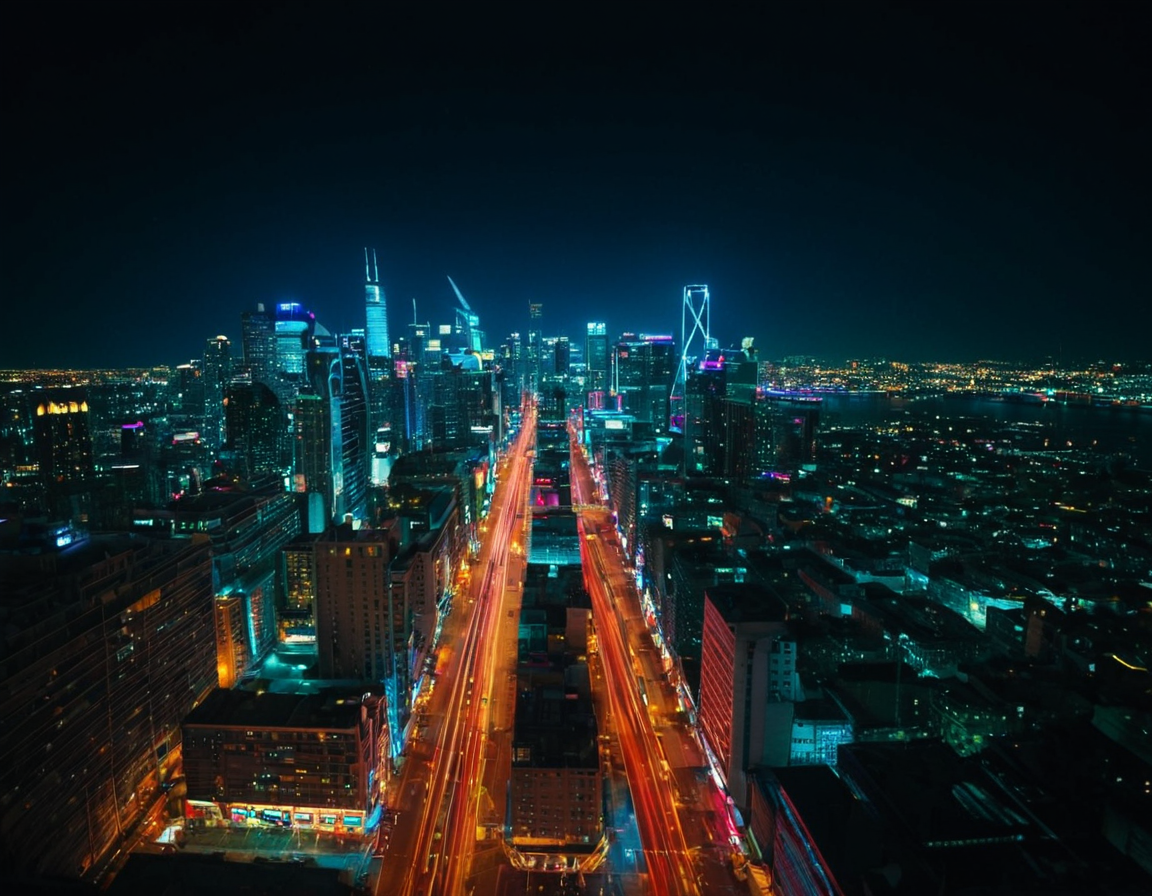Neon Luminance Tips for Gorgeous Cityscape Shots

Exploring the Rise of Neon Luminance: How to Capture Glowing Cityscapes with Long Exposure
Introduction
The allure of neon-lit cityscapes has captivated artists and photographers for decades. The vibrant glow of neon lights can add an otherworldly quality to urban landscapes, making them stand out in a crowd. In this article, we’ll delve into the world of long exposure photography and explore how to capture these mesmerizing scenes.
The Art of Long Exposure
Long exposure photography involves capturing images over extended periods, often using specialized equipment and techniques. This allows photographers to achieve unique effects, such as blurred motion, glowing trails, or, in our case, neon-lit cityscapes.
Understanding the Fundamentals
Before we dive into the nitty-gritty of long exposure photography, it’s essential to understand the fundamentals. The key factors at play are:
- Camera settings: Shutter speed, aperture, and ISO
- Light sources: Natural light, artificial light, or a combination of both
- Subject matter: The cityscape, in this case
Camera Settings for Long Exposure
When it comes to long exposure photography, the camera settings are crucial. Here’s a brief rundown:
- Shutter speed: This is where the magic happens. A longer shutter speed will allow more light in, resulting in a brighter image. However, be cautious not to overdo it, as this can lead to noise and loss of detail.
- Aperture: A wide aperture (small f-stop number) will let more light in, while a narrow aperture (large f-stop number) will result in less light. For long exposure photography, we’ll often use a medium or wide aperture.
- ISO: Keep the ISO low to minimize noise and digital artifacts.
Finding the Right Light
Light is essential for creating those captivating neon-lit cityscapes. Here are some tips for finding the right light sources:
- Natural light: Look for locations with interesting natural light, such as during sunrise or sunset.
- Artificial light: Neon signs, streetlights, or building lights can add an otherworldly glow to your images.
- Combination of both: Mixing natural and artificial light can create some truly unique effects.
Capturing the Cityscape
Now that we’ve covered the basics, it’s time to put our knowledge into practice. Here are some tips for capturing those stunning neon-lit cityscapes:
- Look for interesting compositions: Play with leading lines, symmetry, and framing to add depth to your images.
- Experiment with angles: Get low, climb high, or try unusual vantage points to add some excitement to your shots.
- Pay attention to lighting: Adjust your camera settings and light sources to achieve the desired effect.
Putting it all Together
Capturing glowing cityscapes with long exposure requires patience, practice, and a willingness to experiment. Here’s an example of how you might approach this:
- Find a location with interesting neon lights
- Set up your camera and adjust settings for long exposure
- Experiment with different angles and lighting setups
- Review and refine your images
Conclusion
Long exposure photography is an art form that can add an otherworldly quality to urban landscapes. By understanding the fundamentals, finding the right light sources, and experimenting with camera settings and composition, you can capture truly unique and captivating images. Remember, practice makes perfect, so don’t be afraid to try new things and push the boundaries of what’s possible.
Call to Action
Have you ever captured a stunning long exposure image? Share your experiences and tips in the comments below!
Tags
neon-lights cityscapes long-exposure photography-tips urban-landscapes
About Jose Gimenez
Hi, I'm Jose Gimenez, a seasoned photographer and blogger passionate about helping creatives level up their craft. With years of experience shooting weddings, landscapes, and portraits, I share practical tips, tutorials, and tools on lentecreativa.com to inspire and educate photographers.
